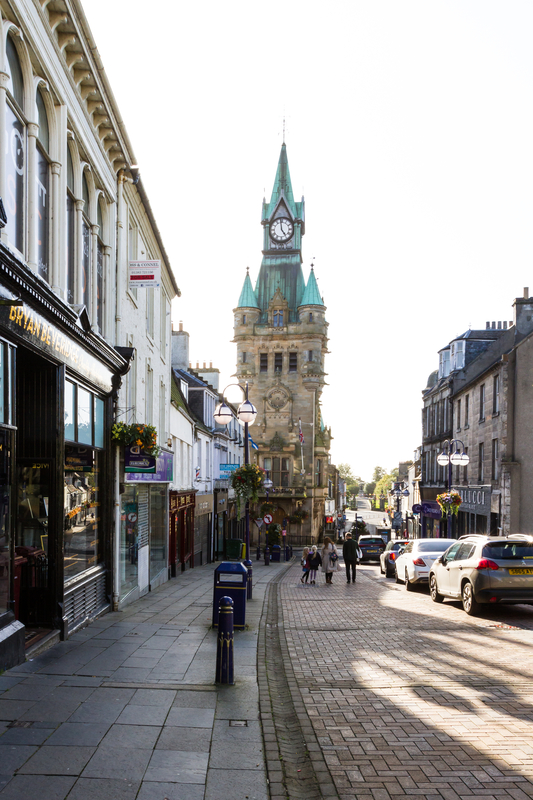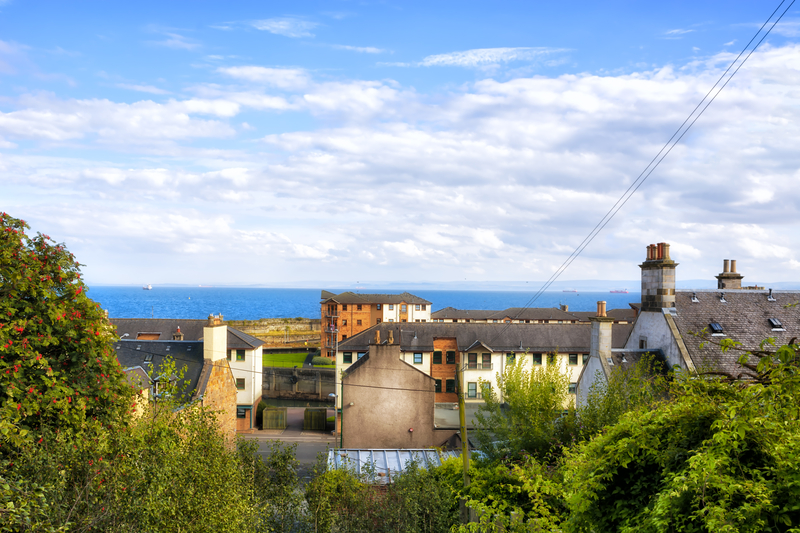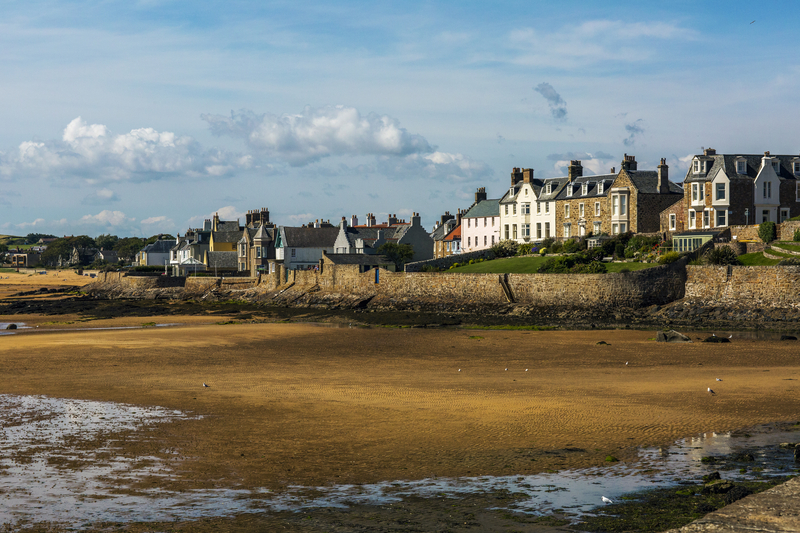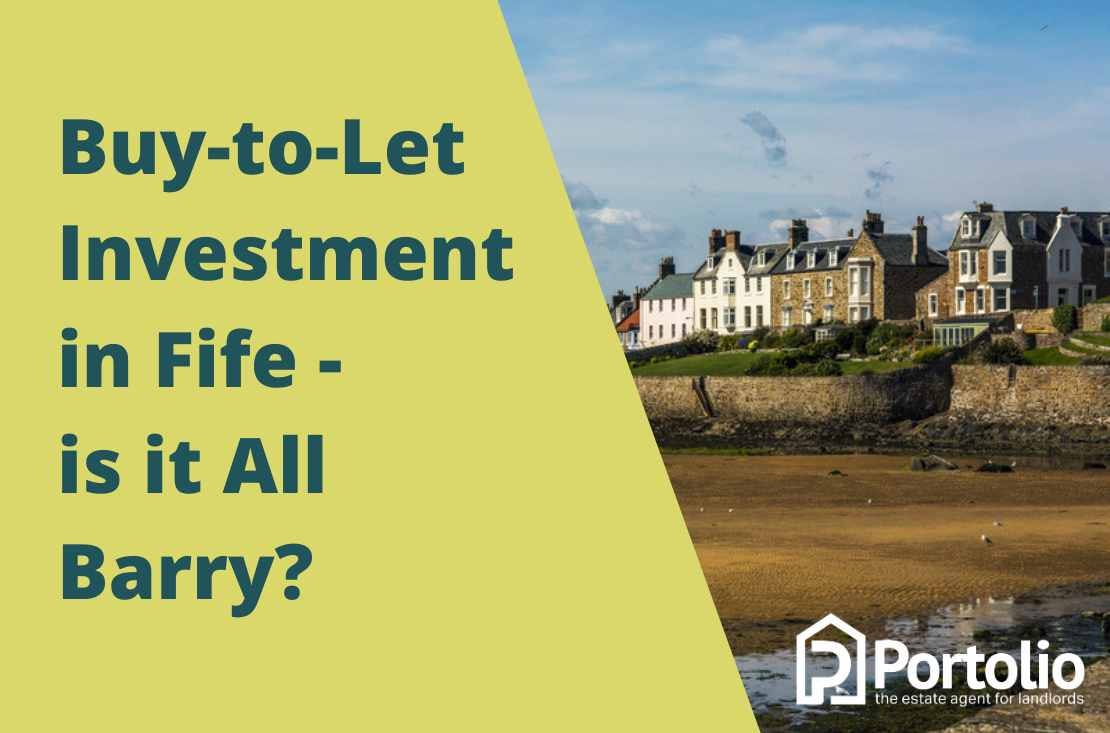Fife is the third-largest region in Scotland, and Fifers will happily tell you that, ken.
They’ll also tell you, forcefully, that no, they’re not just an offshoot of Edinburgh and if you’re lucky they won’t assault you with a lang spoon for your cheek!
It’s a geographically, socially and politically diverse region, reflecting its long and varied history, having once been home to the Scottish capital and spawning Scotland’s first university.
It’s also the home of golf, which happens to suit both of us as keen adherents of the great game, a passion shared by many of our clients!
In this spotlight, I’m going to put my clubs away and put on my property professional cap as I lead you through the potential for buy-to-let investment in Fife.

Fife – a brief history
And brief it will have to be, because as any well-read Fifer will tell you, there is an awful lot of history to this easterly region of Scotland. Geographically, Fife has changed little over the ages, being sandwiched between the rivers Forth and the Tay.
Its easternmost point reaches the North Sea and it will be no shock to learn that for centuries it was home to a thriving sea trade with European countries. The river and the sea provided work and food for centuries being home to fishing fleets.
Although reduced these days, commercial fishing continues in Fife, and there are many communities, especially in the east of Fife which grew up around this industry.
Central Fife is in large part given over to agriculture, everything from grain crops, to fruit and vegetables. Kirkcaldy, still one of Fife’s most populous towns, was famous for the production of linoleum.
During the Victorian era the demand for coal drove the rapid expansion of mining, predominantly in west Fife but also in mid-Fife, often tunnelling miles under the river Forth to recover the riches buried there.

Alongside this, Fife saw the rise of shipbuilding and the creation of several deep-water ports with Rosyth being one of the Royal Navy’s principal anchorages for decades during the twentieth century.
The completion of the rail bridge over the Forth in 1890 finally gave the world an expression to adequately describe an endless task, “It’s like painting the Forth bridge”, and also, coincidentally, made travel far easier!
Seriously – the bridging of the Forth was responsible for great changes across the years, and are highly relevant to our examination of modern-day Fife.
Fife today
The Fife of 2023 is very different from the Fife that existed just fifty years ago. Coal mining is a memory, shipbuilding is no more both replaced by service industries and some centres of high technology.
Fife has also seen considerable growth in property building, especially in and around Dunfermline. As we’ll see, this is in part a reaction to rapidly increasing prices in Edinburgh.
The three largest population centres in Fife today are Dunfermline, Glenrothes and Kirkcaldy, so we’ll compare and contrast these to get a feel for the opportunities for buy-to-let investment in Fife.
There are many smaller towns which may be worth consideration, but short term holiday lets and student accommodation (St Andrews) tend to predominate in these as many are attractive holiday locations and purchase prices will reflect this.
Dunfermline
Now a city, there has been a settlement on the site of Dunfermline since the neolithic period. A few cruel individuals will tell you that not much has changed…

Dunfermline’s population is estimated at over 56,000 as of 2023. That’s a substantial increase since the census conducted in 2011 which put the population at 49,709. This increase has seen substantial housebuilding, especially in the east of the town.
In part this increase has been driven by increasing property costs in Edinburgh, and the difficulty in finding homes there. This has made south Fife, with excellent links to the capital, an attractive alternative for those seeking accommodation.
The average property price in Dunfermline, according to Homes.co.uk is currently £234,008
Looking at CityLetsresearch, the Q1 2023 average cost of rental properties in Dunfermline are £533 for a one-bedroom property, £676 for a two-bed and £913 for a three-bed. Average time to let across all three types is around 14 days.
Scottish Government’s figures, published in November 2022 showed that rents in Fife up to 2022, had increased above the rate of inflation (7.6% at the time). The one exception to this rise was one-bedroom flats.
Dunfermline has one of the highest rates of owner-occupancy in Fife at 66.7%. Social housing accounts for 19.3% with the private rented sector at 11.3%
Glenrothes
Glenrothes is one of Scotland’s post-war New Towns, with a population per the 2011 census, of 39,277. This may have reduced slightly in the intervening years to around 38,250.
Originally built to house miners for the nearby Rothes colliery, it is now home to some exceptionally high-tech manufacturing and is the home to Fife council, based in North House.
Glenrothes has approximately 61% owner-occupied housing, with social housing accounting for 25% and the private rented sector at 11%. These figures relate to 2022.
Rent in Glenrothes is fairly typical of Fife, with one bedroom flats available for around £438 pcm. Two bedroom properties go for an average of £519 and three beds for £609.
Yields are generally on the good to excellent side, being in our experience between 6% and 10%.
Kirkcaldy

The ‘lang toun’ is Fife’s second most populous town, with 50,340 residents according to recent information.
Originally a trading port, it became famous for the production of linoleum, until its demise in the 1960s. Since then Kirkcaldy has relied increasingly on service, retail and leisure industries.
Tenure in Kirkcaldy is slightly different to Glenrothes, with 56.1% of properties owner-occupied, 28.% comprising social housing and the private rented sector accounting for 12.6% of the total.
Average rents in Kirkcaldy are circa £830 pcm. Single-bed properties can be considerably lower with an average of £506 per month, and two-beds average £619 pcm. A four-bedroom house can attract rents of up to £1,500.
Yields are again good, due in part to the competitive property prices to be found in Kirkcaldy. In our experience you should be looking at between 6% and 10%; very similar to Glenrothes.
The rest of Fife

From the beauty of the East Neuk, to the former mining communities in the west of the region, Fife is as varied as any part of Scotland. Consequently, there are some truly excellent properties with eye-watering prices, and some great bargains.
The north of Fife, being just across the river from Dundee, may also present some good opportunities serving those who work in Dundee but prefer not to live in the city.
Space, or a lack thereof, doesn’t allow us to explore the delights of all of them here however there are many areas where property prices are still low enough for investors to realise a healthy rental return on their investment.
Advice from the property pros
When we last looked at Fife in April 2021, our advice was to speak to experts in buy-to-let investing with local knowledge of Fife. In all honesty, our advice two years later would be much the same.
Fife’s proximity to Edinburgh in the south and Dundee to the north ensure that it continues to be a popular place to live, and the recent granting of Green Freeport status, which spills over into southern Fife, should do no harm.
Overall, the demand for good, affordable rented accommodation remains strong, which is good news for potential investors. Yields tend to be good, and there is evidence of solid capital appreciation in some areas.
Within the three areas highlighted, savvy buying will pay dividends (literally). Property prices in Fife can vary massively, if yield matters to you more than capital growth, there are many excellent bargains to be found.
All three have mixed housing stocks and while competition from prospective home buyers may be fierce in some areas of Dunfermline, others are less contested and demand, and therefore prices, will be more reasonable.
Currently Fife remains a solid investment prospect. House prices are rising, especially in Kirkcaldy so there is potential for both income and capital appreciation for the smart investor.
In summary…
It’s a fact that property investment prospects are as varied as the areas you choose to invest in, and buy-to-let investment in Fife is no different. Its history of heavy industry and mining means there are small towns and villages where bargains may await the investor.
Against that, demand for new homes has been high, especially with the influx of home buyers finding the Edinburgh market too rich for their tastes.
With the private rented sector holding steady at around 12% of the market, there is a good solid base for buy-to-let investors to profit from.
Good knowledge of buy-to-let investment potential in Fife, coupled to wide experience of property investment in general will be invaluable, and naturally, we would be delighted to sit down and discuss this particular region with you.
Buy-to-let property investment in Fife will reward those with a well-formed strategy which will guide your investment decisions. If you feel the need for more guidance to this, or any other, region of the UK, just pick up the phone and make an appointment.
Oh! Before I forget – ‘Barry’ is Fife for good or great, while ‘ken’ isn’t Barbie’s boyfriend, it means ‘know’ in Fife!

Written by Chris Wood, MD & Founder of Portolio
Get in touch on 07812 164 842 or email [email protected]


Comments